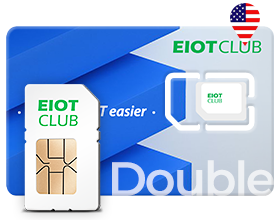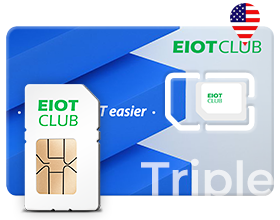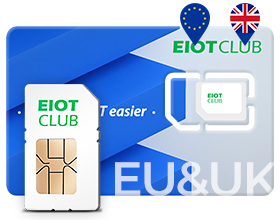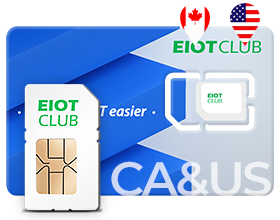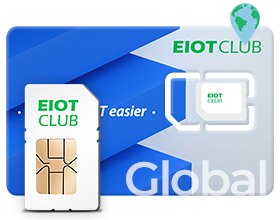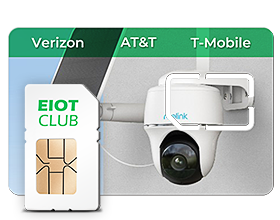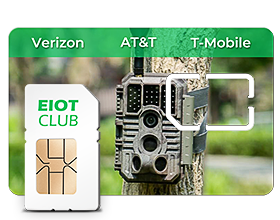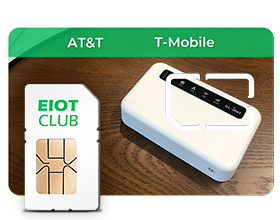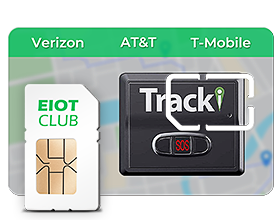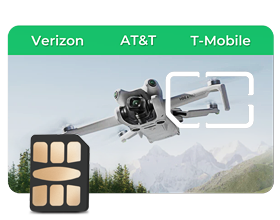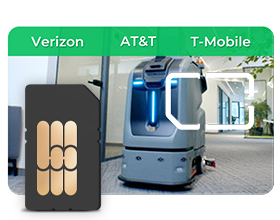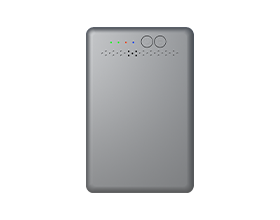Ultimate Guide to GPS Tracker Data Plans: Select, Set Up & Optimize for Peak Performance
Navigation
- What Is a Tracker SIM Card?
- What Is a GPS Tracker Data Plan?
- Key Data Plan Options for GPS Trackers
- Important Factors for Comparing GPS Tracker Data Plans
- Estimating Your GPS Tracker Data Usage
- Comparing GPS Tracker Data Plans From Providers
- Choosing the Right GPS Tracker Data Plan
- Activating and Setting Up the GPS Tracker Data Plan
- Effectively Managing Your GPS Tracker Data Plan
- Tips for Optimizing GPS Tracker Data Usage
For GPS trackers to deliver reliable location tracking, having the right data plan is crucial. The data plan powers the transmission of movement updates from the tracker to your monitoring platform. Choosing an optimal data plan that aligns with your tracking needs ensures you get the most value.
In this comprehensive guide, we'll explore everything you need to know about GPS tracker data plans. You'll learn the basics of how they work, tips for estimating data usage, how to compare plans and best practices for setup and management. Follow along for insights that will help you select the ideal data plan for your tracking application.
What Is a Tracker SIM Card?
A tracker SIM card is a type of SIM card designed and optimized for use in GPS tracking devices to provide cellular connectivity. When inserted and activated in a GPS tracker, the tracker SIM card allows the device to connect to cellular networks and transmit location data wirelessly in real time.
The key purpose of a tracker SIM is to establish data connectivity for location-tracking purposes. It enables the transmission of timestamped GPS coordinates from the tracker hardware out in the field back to monitoring platforms and end-user devices. This creates real-time visibility and mapping of asset locations and movements.
Unlike a regular smartphone SIM, a tracker SIM card does not handle voice calls or text messaging and is engineered specifically for the constant small data transmissions used in GPS tracking applications. Tracker SIMs connect natively to cellular networks like GSM, LTE, and 4G to facilitate wireless data transfer to servers.
To work effectively, a tracker SIM card needs a corresponding cellular data plan suited for the data consumption patterns of real-time location tracking. More frequent location updates require higher data allotments to avoid overages. The SIM card size also needs to physically fit the target GPS tracking hardware, with standard, micro, and nano options available.
What Is a GPS Tracker Data Plan?
A GPS tracker data plan functions as the critical connectivity link that enables reliable location data transmission from GPS trackers out in the field back to monitoring platforms. It provides the cellular data pipeline allowing over-the-air updates of geographic coordinates and movement metrics.
At its core, a GPS tracker data plan facilitates a steady flow of timestamped latitude and longitude data points from trackers to servers. This real-time telemetry stream powers live tracking capability, generates historical movement reports, and triggers custom alerts and notifications.
Cellular providers offer data plan options specifically designed for Internet of Things devices like fleet trackers. They are structured similarly to smartphone plans but optimized for the constant small data transmissions of GPS tracking versus intermittent large data demands like video streaming.
When activated and installed in a tracker, data plans assign a SIM card number for registering the device on the cellular network. Authentication opens the data connection so location pings seamlessly transmit at predefined intervals. This brings field assets into view and under management.
Key Data Plan Options for GPS Trackers
GPS tracker data plans are offered in a range of configurations to suit varying usage profiles:
- Shared Data Plans - Allow multiple trackers to draw from a pooled bucket of data. Effective for larger deployments. Provides the ability to segment allowances across the fleet.
- Unlimited Data Plans - For high volume tracking needs. Ideal when location pings are near-continuous. Eliminates worries about staying within a set data limit.
- Metered Data Plans - Offer an allotted gigabyte amount per billing cycle. Scales to moderate tracking requirements. Carries the risk of overage fees which can be costly.
- Prepaid Data Plans - The user pays upfront for data allotment blocks. Unused data does not roll over month-to-month. Well-suited for intermittent, seasonal, or one-off tracking needs.
- Tethered Data Plans - Leverage data allowance from a smartphone plan. Very limited availability and not recommended for commercial tracking purposes.
Important Factors for Comparing GPS Tracker Data Plans
Making an informed data plan choice requires carefully evaluating key aspects of each offering:
- Included Monthly Data Allowance - The gigabyte amount dictates how much tracking activity can be supported. Crunch numbers on your required location ping frequency and supplemental data uses.
- Network Technology Generations - LTE networks provide the fastest and most reliable data throughput critical for real-time GPS tracking applications. Legacy 3G networks should be avoided.
- Carrier Coverage and Performance - Not all carriers excel in all regions. Check reception and data speeds at the exact tracking location to predict quality.
- Pricing Structure Factors - Calculate the effective per megabyte rate under different plans for accurate comparisons. Unlimited plans offer value if your usage is high.
- Contract Terms and Commitment - Prepaid plans allow flexibility to change carriers anytime. Longer contracts may provide attractive rates for long-term needs.
- One-time Fees - Activation, SIM card, and setup fees vary greatly. Factor all upfront costs into the total expense calculation.
Estimating Your GPS Tracker Data Usage
GPS tracking data consumption depends on:
- Location Update Frequency - Tracking intervals like 30 seconds or 5 minutes have a direct impact on monthly data needs. More frequent pings consume more data.
- Supplemental Data Features - Video streaming and driver ID via RFID pile on large amounts of data demand above just GPS pings.
- Cell Signal Strength - Weak reception forces retransmission of data packets, multiplying usage. A strong signal minimizes this inefficiency.
- Motion-Based Tracking - Trackers can be configured to only update while in motion to conserve data when stopped or parked.
- Geofences and Alerts - Programmed geofences and custom alerts add incremental data consumption when events trigger.
- Carefully calculating your expected usage based on these variables allows you to pick a plan with adequate data to avoid costly overages. Providers can also help guide appropriate plan selection.
Comparing GPS Tracker Data Plans From Providers
Performing careful due diligence across plan offerings from various carriers and GPS tracking providers is advised. Key aspects to compare include:
- Monthly Data Limits and Overage Policies - Data allowances can vary widely between providers. Also, understand overage fees which can be punishing.
- Activation and Early Termination Fees - One-time setup and ongoing contract-breaking fees factor into the total cost of ownership.
- Included Platform Features - Some providers bundle access to advanced tracking portals and analytics tools.
- Network Technology Generations - Focus on LTE plans for speed and reliability. Avoid legacy 3G networks.
- Coverage Reach and Performance - Don't compromise coverage to save a few dollars. Consistent tracking depends on it.
- Customer Service Reputation - Seek providers with robust domestic support and quick issue resolution times.
Choosing the Right GPS Tracker Data Plan
Landing on the optimal data plan requires carefully weighing your needs against plan features:
- Analyze Tracking Requirements - Consider expected update rates, accuracy needs, locations, and supplemental features impacting data usage.
- Match Usage to Plan Structures - Heavier usage pairs best with unlimited data, while lighter needs may align with tiered or prepaid plans.
- Confirm Robust Network Coverage - Real-time tracking demands consistent LTE coverage in all required tracking areas.
- Select Providers Carefully - Prioritize reliable network performance and support over rock-bottom pricing.
- Seek Flexibility - Avoid long contracts with early termination fees. Seek the ability to adjust plans as needs change.
- Taking the time upfront to make informed data plan decisions pays dividends through consistent and cost-optimized GPS tracking.
Activating and Setting Up the GPS Tracker Data Plan
Proper activation and configuration is vital for new GPS tracker data plans:
- Follow Provider SIM Setup Instructions - Carefully install the SIM card per the provided guidelines to avoid damaging the hardware or connectivity issues.
- Confirm Network Registration - Ensure the tracker shows active on the carrier network before deployment. This registration enables data transmissions.
- Adjust Device Settings to Optimize Allowance - Tailor update frequency, motion tracking settings, and other configuration variables to align with your data plan allowance limits.
- Test Connectivity - Perform test location pings and confirm data is feeding to the tracking dashboard. Troubleshoot any connection issues immediately.
- Contact Support - If experiencing activation or setup problems, promptly engage technical specialists at the provider for rapid resolution.
- Correctly setting up the data plan avoids early stumbling blocks and maximizes included high-speed data allotment.
Effectively Managing Your GPS Tracker Data Plan
Ongoing best practices for plan management include:
- Monitor Usage Regularly - Continuously check the data tracking meter to avoid unanticipated overages. Set notification thresholds at key milestones.
- Adjust Device Settings Downward if Approaching Limits - Temporarily dial back update frequency or disable power-intensive features.
- Understand Billing Details - Note critical dates for the renewal and payment cycle. Confirm preferred payment method.
- Scale Data Allowance to Match Usage Fluctuations - Increase data during high usage periods and downgrade when lighter tracking resumes.
- Review Plan Fit Frequently - Revalidate that usage aligns with data plan allowances quarterly or biannually. Adjust as needed.
- Staying on top of plan management reduces costs and maintains uninterrupted tracking.
Tips for Optimizing GPS Tracker Data Usage
Employing sound data conservation practices allows GPS tracking to be accomplished within modest cellular data plans:
- Leverage Motion-Based Tracking - Configuring the tracker to only update location when in motion reduces data needs significantly.
- Strategically Set Geofences Around Key Locales - Geofences minimize unnecessary pings when the asset is within routinely visited areas.
- Schedule Tracking Downtime for Non-Critical Periods - Suspending tracking when up-to-the-minute locations are not needed conserves cellular data.
- Activate Offline Modes Outside Cellular Coverage - Taking the device offline when outside the carrier's network preserves data usage.
- Maintain Proper Power to Ensure Maximum Transmission Efficiency - Weak batteries lead to intermittent connectivity and redundant pings as the device struggles to transmit.
- Optimize Device Location for Consistent Strong Signal - Solid reception means less repeating of data packets which multiplies usage unnecessarily.
Conclusion
Selecting and managing the proper data plan is a foundational pillar of maximizing value from GPS trackers. The process starts with developing crystal clarity on tracking requirements and projected cellular data needs. This informs a thorough comparison of provider plan options to identify the ideal fit. Diligent setup, configuring to optimize the allowance, and staying on top of usage metrics ensures smooth tracking within limits. As demands evolve, proactively adjust plans accordingly. Applying the recommendations in this guide equips you to make and maintain data plan decisions that keep your GPS tracking operating at peak efficiency.
Q&As
Q: What's the difference between a tracker SIM card and a regular SIM card?
A: A tracker SIM is designed just for GPS-tracking devices to provide cellular data connectivity. A regular SIM card is for smartphones and handles voice/text/data.
Q: Can I use a SIM card from my phone in a GPS tracker?
A: You could try, but a phone SIM isn't optimized for constant small data transmissions used in real-time GPS tracking. A true tracker SIM will work better.
Q: How do I know which size SIM card my GPS tracker needs?
A: Consult your tracker manual or manufacturer to verify which SIM card size - standard, micro, or nano - is required to physically fit the device hardware.
Q: Do I need a contract for a tracker SIM card?
A: Whether you need a contract for a tracker SIM card depends on the provider and your use-case. Some require contracts, others offer pay-as-you-go or monthly plans. Choose based on your specific needs.
Q: Can I use a tracker SIM card internationally?
A: Some tracker SIMs include international roaming, but you'll want to verify with the provider before traveling overseas. Additional fees may apply.
Q: How much data do most GPS trackers need?
A: It depends on tracking frequency and other features. For limited tracking, 100MB - 500MB per month may suffice. More frequent updates require 1GB+ plans.
Q: What happens if I go over my cellular data limit?
A: Going over your data allowance will trigger overage fees from your carrier which can be very expensive. Select your plan limits carefully.
